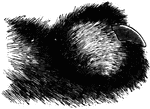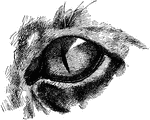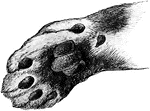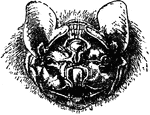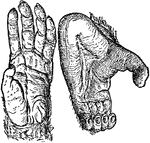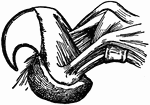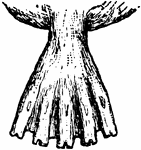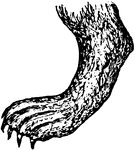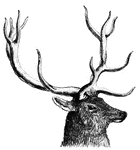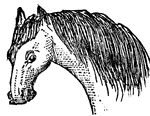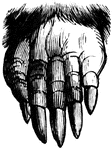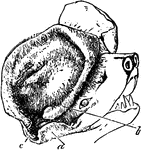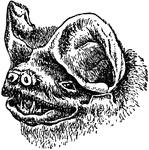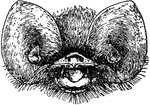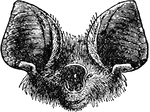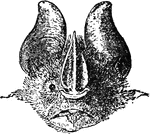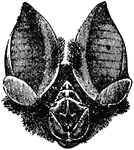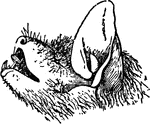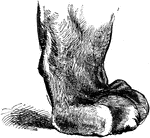The Mammal Anatomy: External Details ClipArt gallery provides 65 illustrations of external details of various species of mammals.
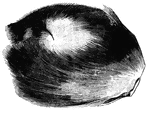
Musk bag
"A small kidney shaped, pendulous bag of the size of a hen's egg, situated below the abdomen and peculiar…
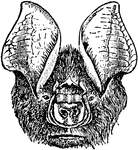
Bat Head
"Bat, one of the group of wing-handed, flying mammals, having the fore-limb peculiarly modified so as…
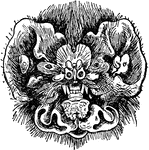
Chin Leafed Bat Head
The head of the chin leafed bat. "Bat, one of the group of wing-handed, flying mammals, having the fore-limb…
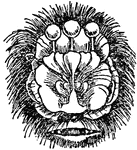
Flower-Nosed Bat Head
The head of the flower-nosed bat. "Bat, one of the group of wing-handed, flying mammals, having the…
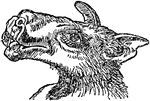
Hammer-Headed Bat Head
The head of the Hammer-Headed Bat (Hypsignathus monstrosus). Also known as the big-lipped bat, it is…

Bat Wing
There are two types of classification, homology and analogy. Homology is the fundamental identity of…
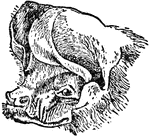
Head of Free-tailed Bat
The Big Free-tailed Bat (Nyctinomops macrotis) is a bat species found in South, North and Central America.
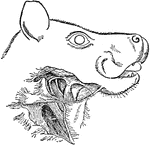
Head and Neck of Singing Fruit Bat
Epomophorus franqueti. Males have two large pharyngeal sacs and an enlarged larynx that enables them…

Chaeronycteris Mexicana
"Head of Chaeronycteris Mexicana, showing fibrillated tongue." —The Encyclopedia Britannica, 1903

Compressed Foot
An extreme form of a compressed foot, typically seen in the deer and ox. It is useful for land transit.
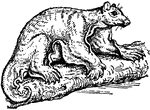
Galeopithecus
Galeopithecus is the generic name of certain mammals from the Malayan region, commonly (incorrectly)…

Head of Gems'bok
This illustration shows a head of a Gems'bok. A Gems'bok (Oryx Gazella) is a species of South African…
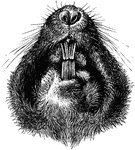
Plains Pocket Gopher
"Under Side of Head of Geomys bursarius, showing entrance of external cheek-pouches and sulcate superior…
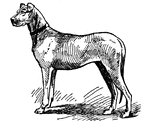
Great Dane
The Great Dane is a dog which has at different times been called the 'boar-hound', the 'German Mastiff',…
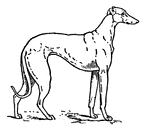
Greyhound
The Greyhound as a show dog is judged as follows: height and weight, ranging from 23 to 27 in. and from…
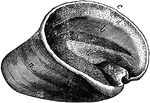
Hoof of a Horse
Detached hoof- supero-lateral view. Labels: a, crust or outer layer of the wall; b, horny laminae; c,…
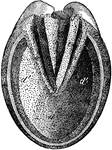
Hoof of a Horse
Solar aspect of the hoof. Labels: a, bars; b, solar border of wall; c, line of union between wall and…

Horse
The anatomy of a horse. 1, ears; 2, forelock; 3, forehead; 4, eyes; 5, eye-pits; 6, nose; 7, nostril;…
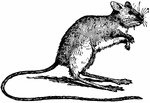
Jumping Mouse
The Jumping Mouse (Zapus hudsonius) is a N. American, jerboa-like mouse, with long hind legs, a very…
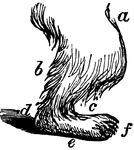
Polar Bear Leg
The anatomy of a polar bear's leg. a, femur (thigh); b, tibia (leg); c, tarsus and metatarsus (foot);…
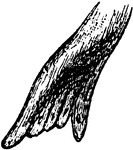
Foot of Seal
"Foot of the seal, which opens and closes in the act of natation, the organ being folded upon itself…
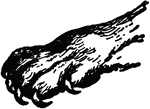
Tiger Paw
"Felidæ or Felinæ is the cat tribe, a family of carnivorous quadrupeds, including the domestic…

